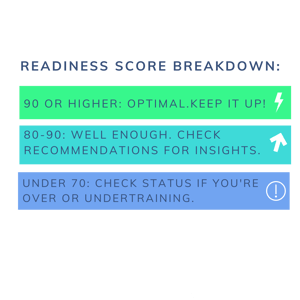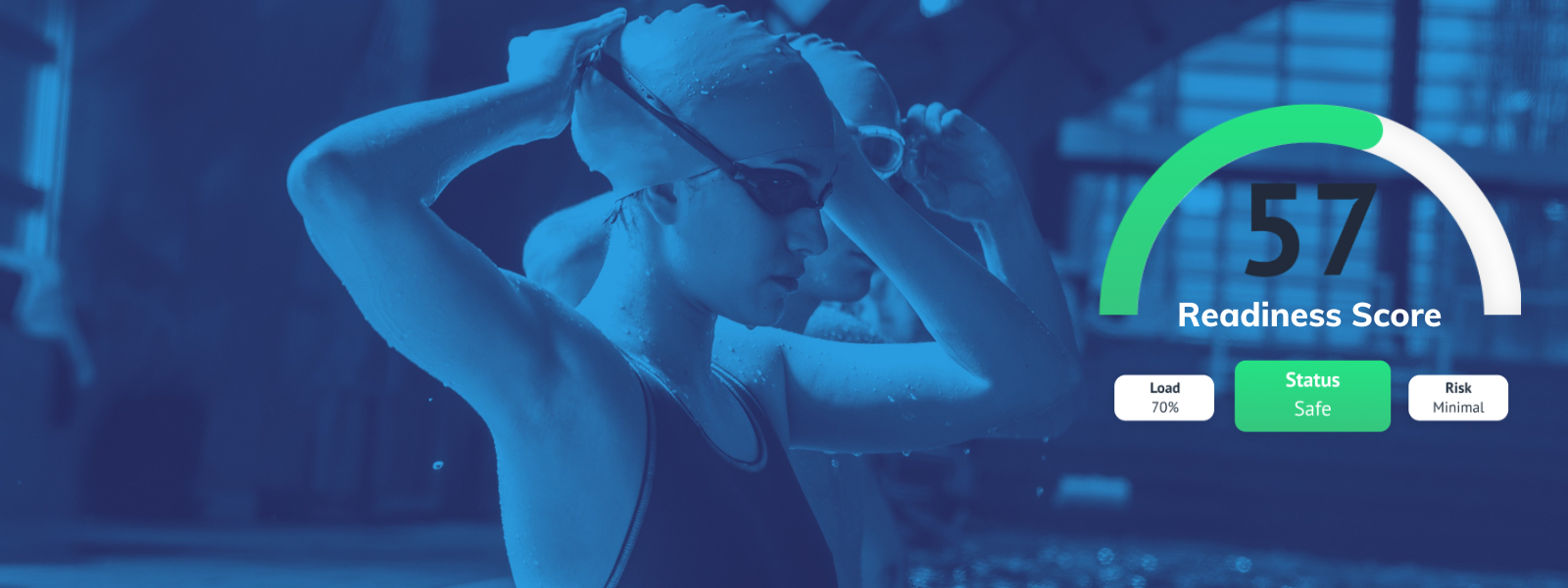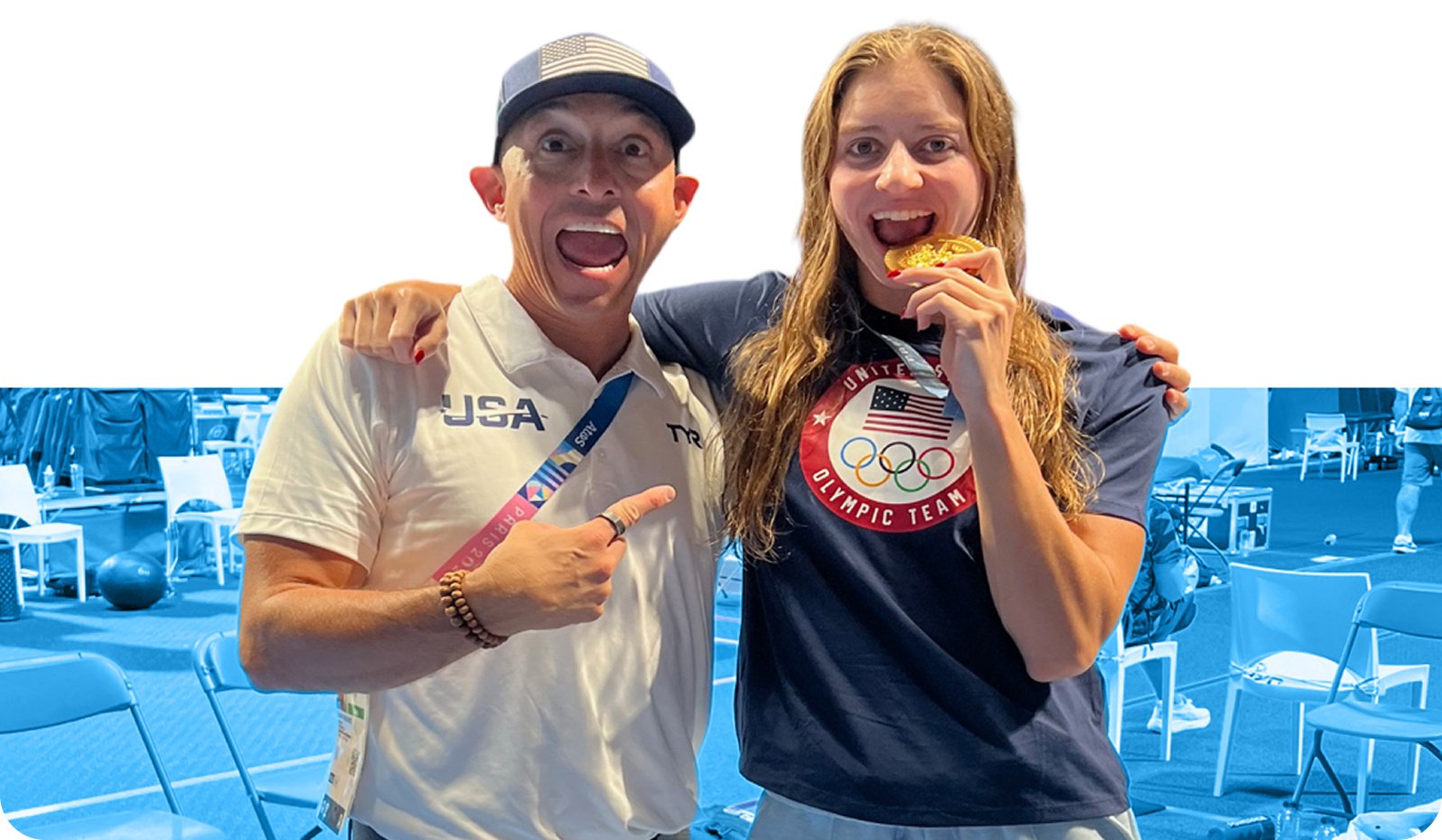Readiness Explained
By monitoring Readiness with TritonWear, you’ll have an insider look into how your body adapts to things like stress, work, nutrition, training, and more. Readiness tracks load change over time and shows your injury risk and status (safe, overtraining, or undertraining).
Breaking Down High and Low Readiness Scores
The majority of the training activities will hit a 90 score. Scores 90 or higher mean you are increasing training at an optimal rate. The goal is to keep the Readiness Score between 90-100, where you are maximizing improvement while staying ‘Safe.’
Scores under 80 will require your attention. The further your score is from the optimal score (90-100), the further you’ll be from keeping your body ready and injury risk-free. A score under 80 may mean you are either overtraining or undertraining.

What impacts Readiness Score?
1. Training load and intensity.
How much you train (duration, frequency and intensity) influences your body’s response to training. If you are increasing load or intensity faster than your body can adapt to, you leave yourself vulnerable to injuries. In this case, both your RPE (rate of perceived exertion) and load monitoring will be affected. You will feel sore and tired, and you’ll need to support your body through recovery.
On the other hand, undertraining will affect the load monitoring that is part of the Readiness calculation. If you are not hitting a steady increase in frequency, duration or intensity, then you’ll struggle to see improvements. The Readiness will reflect that by showing a low score and alerting you with a status of undertraining. The Intensity Score will also appear low.
2. Emotional State.
Emotions can impact performance both positively or negatively, depending on how they are internalized. Positive emotions can help sustain motivation and enable you to approach training with enthusiasm and high energy.
Negative emotions, by contrast, are linked to training avoidance and a decrease in performance. Many things personal to an individual, school or work stress, relationships with other people, thoughts and memories can trigger emotional reactions.
Skipping workouts/meters or not performing well during practice will affect your Readiness and Intensity Score. One thing you can do is focus on technique. Readiness and Intensity may be low for these practices, but Focus can be high.
How to improve Readiness Score?
1. Training Habits.
The best thing you can do to maintain a good Readiness Score is to adopt habits that support recovery and injury prevention.
- Activation. Always start your workout with a dynamic activation routine. A good activation will prepare the body for additional workload.
- Cooldown. Never skip the cooldown. An active cooldown will ensure you gradually reduce your effort.
- Recovery workout. If your status recommendations show you’re overtraining while also feeling sore, try doing an active recovery workout. A light activity the following day will help reduce lactic acid buildup and muscle soreness.
2. Sleep Goals.
- Quantity. Sleep can help maximize muscle growth and improve performance. On the contrary, fatigue affects the body’s immune response and is linked to increased injury and illness risk. The body needs time to regenerate cells and repair muscles from daily training.
- Quality. Sleep is an integral part of maintaining optimum health. For athletes, however, sleep becomes a crucial pillar of success. It’s become clear that both the quality and quantity of sleep impact performance. To promote quality, create a comfortable sleeping environment and stay away from electronics before bedtime.
- Consistency. The more consistent you are with your sleep and wake times, the better sleep you'll get. Different functions happen throughout each stage of sleep, and all are necessary for our overall health. By maintaining sleep consistency, you’ll optimize your recovery and performance.
3. Nutritional Recovery
Nutritional recovery can help with your body’s readiness for the following practice and between races. Failure to replenish fluids and fuel your body can quickly result in sore muscles, fatigue and underperformance.
Next, learn: Adjusting Your Training to Keep Your Body Healthy.



.png)

.png)